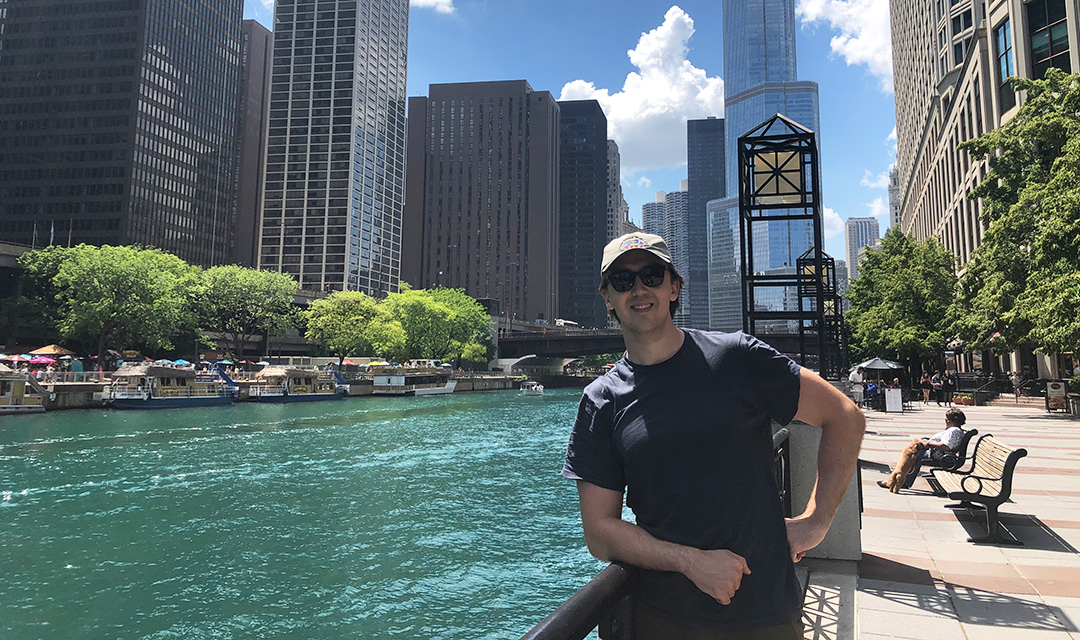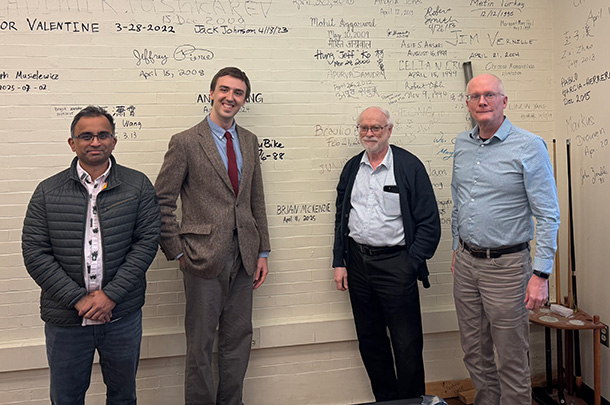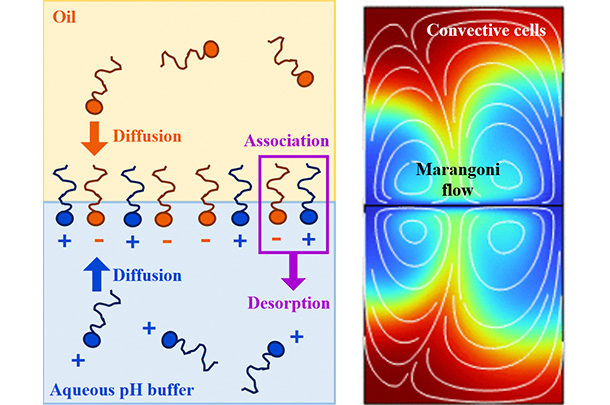Student spotlight: Brian McKenzie
Lauren Smith
Jun 11, 2025

Source: Brian McKenzie
Brian McKenzie thinks of applied mathematics as an art. "I find beauty in what I do. There is a lot of pattern formation in simulations of fluid flows," he says.
His research connects to new technologies through processes like diffusiophoresis. Diffusiophoresis is a way to move colloidal particles through a fluid, driven by a concentration gradient of solute molecules. In the human body, for example, establishing a solute concentration gradient in a particular location could propel a drug particle deep into a tight space.
My training at Carnegie Mellon really expanded the range of problems I can think about.
Brian McKenzie, Ph.D. student, Chemical Engineering
For two of his projects, McKenzie collaborated with fellow chemical engineering Ph.D. student Angela Yang ('24), an experimentalist who shared the same advisors. Yang created a microfluidic device that can establish solute concentration gradients. She tracked the movement of particles up and down those gradients. McKenzie modeled what was going on inside the device in order to interpret the experimental results.
"We found that we were able to greatly enhance the process of diffusiophoresis by using more complicated chemistries," says McKenzie. Existing research focused on simple solutes, like salt. "Our work is relevant to chemical systems in many industrial processes, where you often have larger molecules such as polymers and surfactants which interact with each other and self-assemble," explains McKenzie. "Think about the ingredients involved in the formulation of personal care products. There are all kinds of things added into the mix."
Diffusiophoresis isn't the only topic to which McKenzie can connect his theoretical research. His advisors have exposed him to a wide range of research in fluid mechanics and colloid science. "My training at Carnegie Mellon really expanded the range of problems I can think about," he says. "Applied math can model many different things."

Source: Brian McKenzie
Brian McKenzie with Aditya Khair, Robert Tilton, and Stephen Garoff in the ChemE Grad Lounge after his dissertation defense.
Working with Aditya Khair, Robert Tilton, and Stephen Garoff also allowed McKenzie to finesse his communication skills. "When I presented updates each week, I had to communicate to each of them in the language of their specialty: theoretical fluid mechanics, complex fluids, or physics," says McKenzie. He's now confident in his ability to share his insights from applied mathematics with people from different disciplines.
McKenzie demonstrated those skills at the 2024 American Institute of Chemical Engineers (AIChE) Annual Meeting, where he received the Excellence in Fluid Mechanics Research and Oral Presentation Award.
McKenzie presented his work modeling a convective instability at the interface of two solutions. The project began when a former student in the Tilton group noticed an unexpected rippling flow while experimentally measuring the interfacial tension between two surfactant solutions. "We expected things to be stationary. Instead, we observed a rippling phenomenon persisting for up to an hour with some cloudiness forming in one of the solutions," recalls McKenzie.
He thought he could explain this phenomenon as a Marangoni instability, a type of hydrodynamic instability driven by interfacial tension forces. This was puzzling, though, because neither solute was expected to transfer into the other phase, as would occur in the typical understanding of a Marangoni instability.

Source: Brian McKenzie
Marangoni instability driven by association of oppositely charged surfactants.
McKenzie's mathematical analysis showed that the flows they observed couldn't have occurred unless something new was added. "We think that positively charged surfactants and negatively charged surfactants were coming together to form complexes," he says. "That would be in line with the turbid or milky appearance arising in the water phase." McKenzie modeled the convective instability through analytical pen-and-paper mathematics and also with a full numerical simulation showing the circulation in the field of the fluids and the deformations of the fluid interface. Using mathematics to gain insight into physics is a keystone of his work.
To unwind from research, he has hosted a weekly radio show on WRCT, which broadcasts from the Carnegie Mellon campus. McKenzie also enjoys biking on Pittsburgh-area trails. He hopes one day to ride the Great Allegheny Passage trail between Pittsburgh and Washington, D.C.
